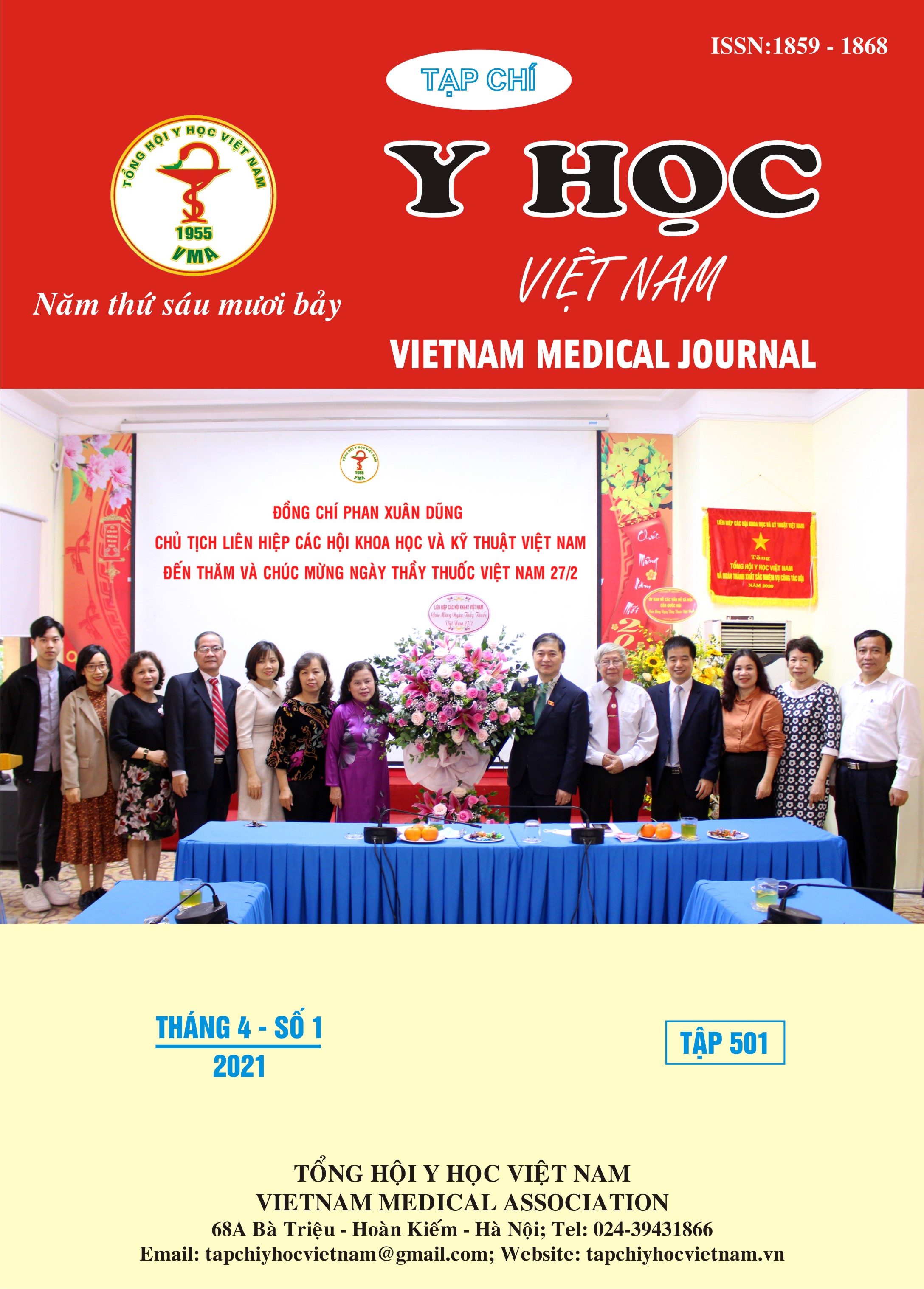NGHIÊN CỨU ĐẶC ĐIỂM BIẾN THIÊN NHỊP TIM Ở BỆNH NHÂN TRƯỚC VÀ SAU PHẪU THUẬT CẦU NỐI CHỦ VÀNH
Nội dung chính của bài viết
Tóm tắt
Sau phẫu thuật cầu nối chủ vành có hiện tượng giảm biến thiên nhịp tim. Đây được xem là một trong những dấu hiệu của rối loạn chức năng tim và là một trong những yếu tố tiên lượng các biến cố tim mạch. Vì vậy, chúng tôi nghiên cứu đặc điểm thay đổi biến thiên nhịp tim trước và sau phẫu thuật cầu nối chủ vành bằng Holter điện tim để làm cơ sở đánh giá, theo dõi biến cố tim mạch sau phẫu thuật. Đối tượng và phương pháp nghiên cứu: tiến cứu mô tả theo dõi dọc 119 bệnh nhân được phẫu thuật cầu nối chủ vành có tuần hoàn ngoài cơ thể tại Bệnh viện Tim Hà Nội từ 6/2016 đến 8/2018. Theo dõi biến thiên nhịp tim bằng Holter điện tim 24 giờ tại các thời điểm trước phẫu thuật, sau phẫu thuật 7 ngày, 3 tháng và 6 tháng. Kết quả: Tất cả các chỉ số biến thiên nhịp tim theo thời gian và theo phổ tần số đều giảm sau phẫu thuật, hầu hết phục hồi sau 3 tháng. Đặc điểm biến thiên nhịp tim giảm trước phẫu thuật có tỉ lệ là 28,6%, sau 7 ngày 51,8%, sau 3 tháng 19,6% và sau 6 tháng là 12,7%. Trong đó chỉ số ASDNN và SDNN trước và sau phẫu thuật có tỉ lệ thay đổi nhiều nhất. Kết luận: Các chỉ số biến thiên nhịp tim theo phổ tần số và theo thời gian thay đổi giảm, thấp nhất ở giai đoạn sớm sau phẫu thuật. Các chỉ số này hồi phục sau 3 tháng, tăng lên sau 6 tháng so với trước phẫu thuật.
Chi tiết bài viết
Từ khóa
biến thiên nhịp tim, phẫu thuật cầu nối chủ vành
Tài liệu tham khảo
2. Michel H Crawford and al (1999), "Guidelines for Ambulatory ECG", Journal of the American College of Cardiolory and the American Heart Association,34(3):pp.912-19.
3. Tatiana Mironova, Vladimir Mironov, and cs (2017), "Heart Rate Variability Analysis Before and During Coronary Artery Bypass Graft Surgery", Clin Surg, 2(1559).
4. Brown C.A., Wolfe L.A., Hains S., et al (2004), "Heart rate variability following coronary artery bypass graft surgery as a function of recovery time, posture, and exercise", Canadian Journal of Physiology and Pharmacology, 82(7): pp. 457- 464.
5. Milicevic G., Fort L., Majsec M., et al (2004), "Heart rate variability decreased by coronary artery surgery has no prognostic value", Eur J Cardiovasc Prev Rehabil, 11(3): p. 228-232.
6. Demirel S., Akkaya V., Oflaz H., et al (2002), "Heart rate variability after coronary artery bypass graft surgery: a prospective 3-year follow-up study", Ann Noninvasive Electrocardiol, 7(3): pp. 247-250.
7. Feng J., Wang A., Gao C., et al (2015), "Altered heart rate variability depend on the characteristics of coronary lesions in stable angina pectoris", Anatol J Cardiol, 15(6): pp. 496-501.


